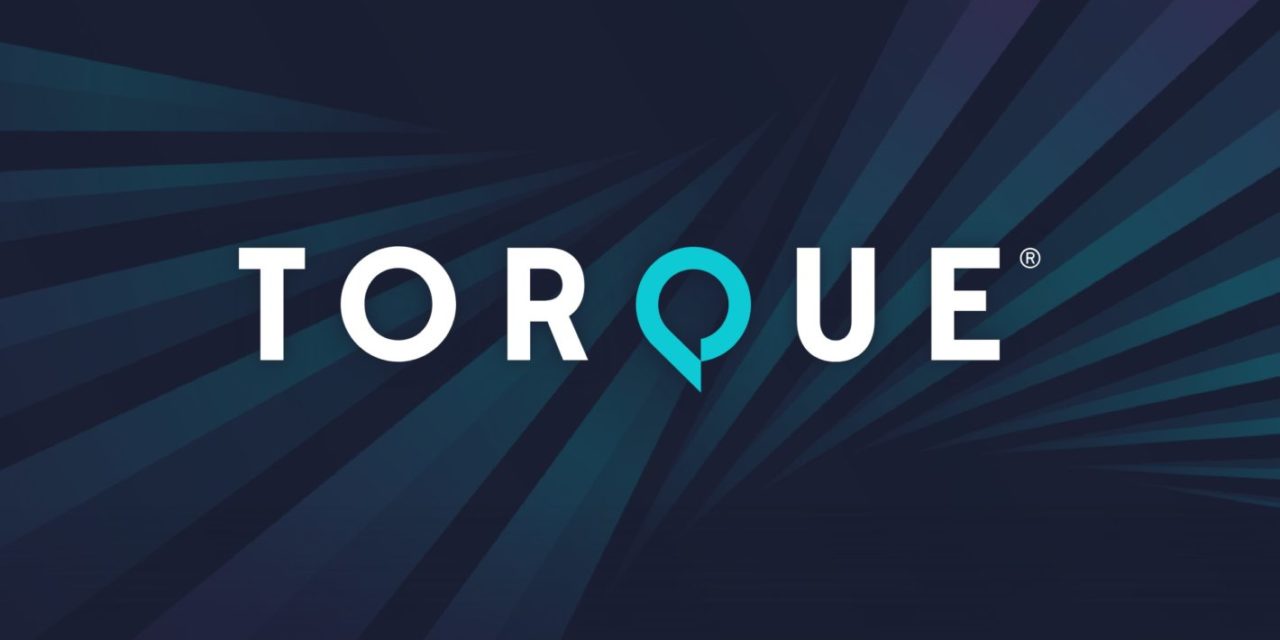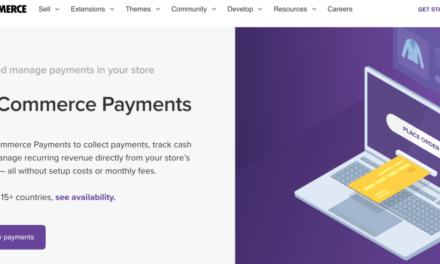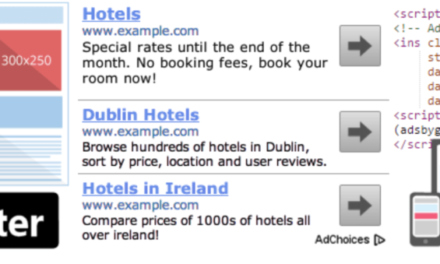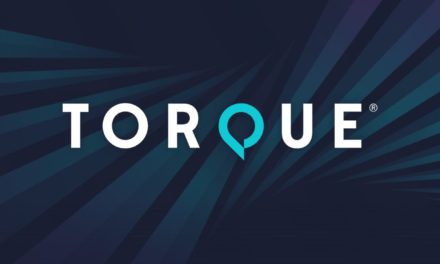Welcome to Press This, the WordPress community podcast from WMR. Here host David Vogelpohl sits down with guests from around the community to talk about the biggest issues facing WordPress developers. The following is a transcription of the original recording.
David Vogelpohl: Hello everyone and welcome to Press This the WordPress community podcasts on WMR. This is your host, David Vogelpohl, I support the WordPress community through my role at WP Engine, and I love to bring the best of the community to you hear every week on press this as a reminder, you can find me on Twitter @wpdavidv, or you can subscribe to press this on iTunes, iHeartRadio, Spotify, or download the latest episodes at wmr.fm. In this episode we’re going to be talking about hidden profits, and faster workflows for WordPress agency. And joining us for that conversation is a very important person on the topic I’d like to welcome to Press This district Vito Peleg, Vito, welcome to Press This.
Vito Peleg: Thanks, David it’s good to be here again. I was here when I first launched the product like a month after we went live, so it’s exciting to be here again a couple of years after, with a new name, also, not only for the product.
DV: All right, all right well I’m glad to have you back guys getting in the Wayback Machine there to your prior episode we were like 190 Since the reboot there could be other episodes so glad to have you back here. This listening though in this episode, what we’re going to cover what Vito is going to cover he’s with a company called the auto Dream, which focuses specifically on workflow optimization for agencies and freelancers and Vito is going to share his views on why workflow optimization is important, how faster workflows can unlock hidden profit centers in your Freelancer agency business. And then the methods that you can use to achieve this. So really excited about this Beto, I’ll kick us off and I don’t remember your answer from last time, so this will be news to me again. But briefly tell me your WordPress origin story.
VP: Right, so I actually started building websites, my previous life when I was a full time musician during the world as the leader of a rock band, and the personal side was good for me. For the band itself, and then kind of started kicking off building websites for clients directly from the back of the band, and I was almost 15 years ago now. And then once we turned 30 And it wasn’t cool to live in a band or was smelly guys anymore. That’s when we kind of put a stop to the band life or the touring life, and I started building an agency focused on WordPress. We reached out to the team of 12 within the first three years and through the experience delivering hundreds of websites to clients, we kind of developed the system that helped us deal with the cloud communications, optimizing the project delivery and Systemising the work in a way that leaves property on the table for me and for growth, business, and that is what started as WP back back in the day. And now, it won’t be two or three or three.
DV: You know, it’s really interesting, you know, to hear about you talking about workflow optimization, I can’t imagine that workflow optimization was an easy thing making sites in the back of her hand. I will say though that with social distancing I feel like being, you know, locked away from society in the back of the van is probably a good thing these days, Vito so maybe that’s coming back, but you kind of mentioned how this journey with development, launching your own agencies starting from the back of the van building sites for others, kind of led to afternoon Could you, could you explain a little bit about more about what every afternoon is.
VP: Sure, so it’s a platform that helps our web freelancers and agencies to deliver projects faster, and by eliminating almost all of the back and forth between them and their clients as well as Systemising the work internally within the team. So it started from a feedback tool that allows people to click any element on the web page itself is like it used to be a plugin that you install on the client’s website when the client can click any part of the HTML page itself to leave a comment to describe what they want to change so change this text. Change this button color instead of a 1000s of back and forth, which button there is 100 of them on this page on this website or which product are you talking about, there are 500 products on this site. So this really already cleaned out a whole bunch of this back and forth. We’re also collecting an automated screenshot to the client doesn’t need to learn how to create those, those resources for the developers, we’re collecting screen size, loss aversion so really we systemized and automated, a lot of the stuff that up until our software was pushed to the clients responsibility to deliver to us. And now with the click of a button, they can just point and say what they need to change and that kind of fix it. Then from there we have all the product into looking at the entire workflow of delivering the project and that includes working internally with the team, how do we distribute tasks. So for example how we used to do it is I received a message from a client on email or slack or WhatsApp or, you know, however they wanted to be. And then from there I went over to our internal chat system, start with Skype and slack and told the last developers or the team members to stop working on this particular task. Then I went over to Trello, back in the day and then Asana, to start moving to the tickets, creating a ticket over there, dragging this within our campaign, only then to wait for the developer to finish they would let me know when it’s done, I was back to Asana, drag the ticket and went back to my email to leave that message. So all of this kind of sounds crazy when you describe it out loud but this is the standard workflow of delivering websites in our industry. And what we did is we simply automated, the whole thing. So when the client leaves a comment right where the request is the developer just moves this to inform this with the click of a button, and that notifies the clients we don’t need to send those emails, it moves it on a, on a designated campaign wall, and then when the client when the ticket is complete, the developer the person working on it Martin says Done again the client is automatically notified the team, the project manager or the agency owner in just look at the combat board instead of moving things around in it, so it became the Kanban board became from a tool that I interacted with on a daily basis, just the tool that I observed to see the progress of tasks as it moves on itself.
DV: Yeah, I think I’ve you know I’ve ever seen walking through and I’m sure it was a much earlier version, London before the pandemic and really elegant way of approaching it as I listened to you though as you describe kind of the origin story of atheria, e te A Ri M for those listening, what I heard in your voice veto was a little resentment a little resentment for all that extra work you’re having to do before it like, you know what I’ve been through that and I remember seeing it come back, you know, back in there in London thinking like man I wish it had something like that, when I was in the agency business. But like, these work for problems, like, why is optimal, optimizing agency workflows important over time because it is a one and done or do you have to do it all the time or how do you think about that.
VP: right, so first of all it really nothing in business gets done. As I’ve learned over the years. it’s you know the rabbit hole just keeps extending as you dive deeper. And I think that’s part of the interesting part of being in business and, you know, growing something out of nothing. So, optimization, always needs to happen, especially because the business just keeps evolving constantly, you’re starting as a freelancer in most cases and then those things. Don’t you know you don’t really think about those things because you’re dealing with one to three clients, that’s fine you know you don’t think about the time that you’re wasting, because you’re not doing it at scale so by the time you repeat the task enough time has passed so that you don’t even remember you did exactly the same way a couple of days ago. But as you scale and as you start managing projects, you know, multiple projects at the same time, then you start realizing all of these pitfalls that are chipping away into your profit. And you know as you, as I’m working with, with agencies and I’m sure from your side and WP Engine as well as you guys are working with larger agencies, you can see that they focus on the seconds, not only the minutes and the hours, But as to really optimize the system starts from the bigger chunks and then you really zoom in further to keep optimizing it to see I remember, you know, in our, in our summit that you were speaking a couple of weeks ago, and we had a we had to read from angry creative. So one of the biggest agencies here in Europe. And, you know, I remember when I met him at WordCamp us back in 2019. He was showing me his dashboard of how he’s controlling every single aspect of his way of his agency, how he’s, he literally had gauges like it looked like a you know like one of those like a soccer field, and that he could see how profitability happens on every single aspect from the project itself to the level of the client to the level of the team member to the level of the task. So, you know this is like high level optimization and so I still have a lot more to get into to get to Jimmy’s level for example. But even taking care of the small bits and pieces that you can automate and systemize within the agency. So it’s like a whole lot of time.
DV: Yeah I was gonna say it sounds like really ultimately, you know it’s important because you need to have a documented process that you can repeat over and over and over again if you can, but that those processes evolve over time and so it’s like this ongoing thing versus this one and done. I know that like, generally people will put off these optimization workflow projects. I want to talk to you about your thoughts on the why, but we’re gonna take a quick break and we’ll be right back.
DV: Everyone welcome back to Press This WordPress community podcast on WMR. This is your host, David Vogelpohl, and we’re in the middle of our episode around hidden profits and faster workflows for WordPress agencies, Vito right before the break, you were telling us a little bit about the value of optimizing workflows over time and kind of mentioned that sometimes people kick the can on this. What do you think agencies and freelancers, like, put off working on optimizing their workflows.
VP: Well first of all, there’s so many variations, well it seems like there’s so many variations when it comes to building website project. A lot of times in our industry we approach every project from scratch, instead of trying to systemize and find those, those recurring tasks recurring points that happen within the, within the delivering process, but really when you come to think about this and when you even list down all the tasks that you’re doing, you can easily identify the repeatable parts of it. And that’s really what people are missing out on, you know from the process of getting into this rabbit hole with our with our software and over the last few years and even through my agency days. I read, I come to kind of realize or even we surveyed the community to understand how long does it take for someone to build a website on their own, compared to how long does it take to get the website when a client is in Word, and the results are kind of insane because when clients are involved, usually the, the average is between five to eight weeks of delivering a project. I mean, including gathering the content, improving the designs, going through wireframes, with all of the essential stuff that you need to do to avoid scope creep to avoid getting up and getting out of the budgets of the initial lead of the initial project, where to when you know what you need to do you sit in front of your computer and just build the whole thing. So sickness so five to eight weeks compared to five days. So that’s 82% of our time that is basically being. I wouldn’t say wasted but being invested as a client gets on board, just one collaborator with a project. So, this 82% is what we’re trying to tackle with a believer, this is what people should be looking at within their agency and Imagine how much profit, that is, when you’re looking at this term 8% of the money that you’re saving can be pure, to the slim margins that usually happen in our house.
DV: Those pesky clients always want to talk to you and ask questions, but I mean, obviously that’s kind of a necessary part of doing a good job and that communication stream is important. But your point here is that, because that is such a big chunk of your time. And so it’s kind of this standout opportunity to work on efficiencies. And so as you think about processing customer feedback and the tasks that daisy chain out of that sounds like an especially direct read really focusing on this aspect, but just more generally, it sounded like it was really interesting to hear you describe like, what do you one of those mental blockers for people around like well, I can’t standardize my work every project is different, and it was really funny to hear you say like well it’s actually pretty easy to find the repeating patterns if you actually just spend a little time on it, too, like, Yeah, so like, as I think about that then and like, maybe there’s freelancers agencies listening right now, they’re like really telling me either. What is your advice to them like, what are your three main points of advice for folks like when searching for these practices like Where should they be spending their time, maybe, where should they be looking for these opportunities.
VP: Of course they will have. This is the biggest one, just work in shorter time spans, so there is this, Parkinson’s, Parkinson’s Law, David, I have no basically means that whatever time is given to a task is going to be used, whether it’s a long period of time or a short period of time, so might as well work into short timespan. A good example of this is that sometimes when we ask the client to provide the content, or not even, not even sometimes the average for this is between three to four weeks, we send them off to tell them, I need the content. By the end of the month, I need it in about three to four weeks to deliver the content, but they do and I build websites, many times before, we know that when you sit down and write content for a website doesn’t take four weeks. It’s four hours. When you know what you’re writing about and you have the tools and the capability of creating this piece of one, and so on. So you can see how we’re just wasting so much time in that span. Basically by letting the client know that they have three to four weeks reframing, this is a massive project for them that a lot of times they’re not even going to complete. Because really, as three to four weeks when they’re running their business for anything that long just helping the guy that you hire to deliver something. When it comes to gathering content as the example. So, shortening the time span, another good example. So instead of saying, Give me, give me four weeks and favorite the content. You have one week, or even better, we like to say two days in the weekend, a lot of small business owners do their, you know the work on the business during the weekend. And so by framing this two days in a weekend, you actually get them to think, when, when am I actually going to do this, I’m going to place some time on my calendar, that will be dedicated for this task, Rather than sometime in the next four weeks, that it just stays up in the air, you know, just get to procrastinated the overtime. So thinking about Parkinson’s Law is a really good idea when it, when it comes to benefits. This is actually one of the basic elements of Agile methodology, making sure that you know you’re working with shorter time spans. Another good example is when we’re approving designs. So, you know a lot of us would send the design over to the client and this led to say, let me know what you think. Right. There is no time span, there is no really allocation of how, when should they do this, how should they do that. So, by providing a system to the other side so that they can actually follow a set of small directions, I’m not talking about elaborate, you know, elaborate workflows, we want to keep it simple so that the other side can actually follow the system, and then providing a set time to get several things about where am I really going to do this, so they can set some time aside for this task to complete over that.
DV: Okay so number one is kind of work in shorter timeframes I have not heard of Parkinson’s Law, but I did have a boss when she used to have the saying, and he would say, work expands to fill the time allowed and I think that
VP: Parkinson’s Law, that he quoted as his own.
DV: I gotta go back and question this way, but I think it’s a really good point and I like how you say like, Don’t set for set the framing right right don’t say three to four weeks I like to do your two days in a weekend. But it’s really this notion of craving and like forcing them to make a decision to act instead of being one, maybe 1000s of emails in their inbox. Exactly. What’s your second thing like if that’s the first area maybe we’ll maybe cover another year before the next week.
VP: Sure. So another thing that I would really suggest is, note down your workflow so even better to be open draw.io, or even just open PowerPoint and map it out, some kind of a flow chart. So you can see what I’m doing from the beginning of the project what is happening next. And you will find that really most of the projects in our space go from the wiring the lead, sending out the proposal, getting right to the initial deposit, then you go into discovery, then you go into sitemap or wireframe. After that you go into a gathering content, or you know some, some people will be gathering content in other places. I think that’s the right spots to release that and you know there is just mapping this out gather content and then you have a proven designs, how many revisions, What is the revision. How long do we give a revision for week two, to n, so this is where your first level giving clarity to yourself of your process and the workflow, but also this allows you to, to get your team and your clients, accountable for the system that you’re creating within your business. And if you can make it as visual as possible. And that’s the best that’s why I’m suggesting open PowerPoint open draw that just map it out visually so you can see a flowchart of how the project starts. And from the beginning from acquiring the lead all the way to the care plan.
DV: I love that RCA has a saying where there’s focus there’s progress and it sounds like your idea here, like mapping it out, you’re going to cover things in that journey that I would imagine where you’re like, wait a minute, why am I doing that and this is an efficient and we already did this kind of in three other ways. But the point is I guess it sounds like because you’ve mapped it out, you really start to understand the workflows where you can focus on efficiencies and I’m guessing also reputation. So I’ve got to have your three veto I really curious about the third, but we’re going to take a quick break. We’ll be right back.
DV: Hello everyone welcome back to Press This the WordPress community podcast on WMR. We’re talking about hidden profits and faster workflows for agencies, Vito right before the break you explained two of your three main areas you think freelancers and agencies should focus on when searching for hidden profits and improving their workflows. The first was working shorter timeframes. The second meaning to box in the work to shorter time periods. The second was to diagram document your workflows to look for opportunities for optimization. Standardization on processes and things like this, what’s the number three, like we’re on the edge of our seats.
VP: Right, so number three is, is starting from what I described at the beginning, where when we choose a supplier, that’s when things start to spiral on proportion when it comes to the time of delivery, and really, you know, when you look at this. Most projects in our space they have a set budget, you’re starting with, with, with a quote. This is how much you should be paying me or delivering this project. So whatever you can cut away from the time it really is, profits that you’re left with in your hand, because, essentially, no matter how we like it or not, we’re selling our time and our developers time and you know why we’re creating this as a service business. And so what I would suggest is, don’t assume that the client knows, because when we assume that the client knows what is expected of them. That’s when they will go into like a writer’s block, or they will go into a process of frustration because they just don’t know what to do. And a good example of this is when we are, you know, when I talk to a client after, after you do the first 100 websites, let’s say, What do you talk to client on this initial phone call this 15 minutes for that you get to know their business really briefly. When you acquired the lead on this 10 minutes, I’ve already kind of picture in my mind, how the end product will look like. And so, I hear that this is going to be like a small shop that they have. And so they’re probably going to be selling 10 wood products so I probably won’t have inaccurate archive pages with filters and searches, it’s probably going to be like a few feature products. If that is the project itself. And alternatively if it’s, if it’s a real estate business so about it to consider how to create a listing of all of their properties and stuff like that. I already know these things just by the definition of the business or just by talking to the client for a few minutes and get a mock up of how the website will look in my mind I can postulate. The visual how of the website itself, while the client has no idea. And I like to compare this so I know that our producer Eric is also a musician, and so I like to compare this to music really, you know, we’re trying to communicate a visual product website. In words, in most cases, to someone that never did it before and if they did it they did it a few years ago. It’s like trying to describe to a non musician to a person that never touched an instrument. How does the song sound like. Right. It’s kind of weird and you’ll never get that same experience and then we’re wasting a lot of time on explaining things instead of showing instead of taking people through this necessary learning curve, even more than that and again comparing this to music. Assume that you can see the matrix, while the client can’t. And if I’m taking this back to music when a musician listens to a song, they don’t hear the song, they can hear the bass drum, they can hear the backing quote of this one singer that is on the far left side, and they can hear the rhythm guitar that is just playing every few hours. And you know, we can hear the matrix when they’re listening to songs. In the same way as a web designer and web developer, when you look at a website, you don’t see a website, you see the layout to see the color schemes, you see the flows, the use of flows, you see that different sections in WordPress after a while, and you just look at a website and you say, All right, this is elemental right. In other words I said oh yeah this is Divi just by the type of buttons that you will find, for that particular website, and you can really identify the themes that the tools that were used. So, the client has none of that. And a lot of times because we’re doing this as a repeatable process again and again and again we start assuming that the client has the same clarity over the project, as we do.
DV: I love that point, I mean that’s such a salient point and I’ve been there where it’s like, Within five minutes I can pretty much imagine what a site’s going to be like based on the way a stakeholder might be describing it. It sounds like for you this point is really about slowing down, making sure the customer is educated and aware, so you’re not kind of spinning and wasting cycles later with miscommunication or miss deadlines are missed expectations, these have been tremendous points veto. This is incredible.
VP: Thank you. My pleasure.
DV: Of course of course if you’d like to learn more about what Vito is up to or if you’d like to just check out at Kareem at AR I m.io Please go check it out. Thanks everyone for listening today to press this WordPress community podcast on W Mr. Again, this is your host David mobile Paul, I support the WordPress community through my role at WP Engine, and I love to bring the best of the community to your everyday.











